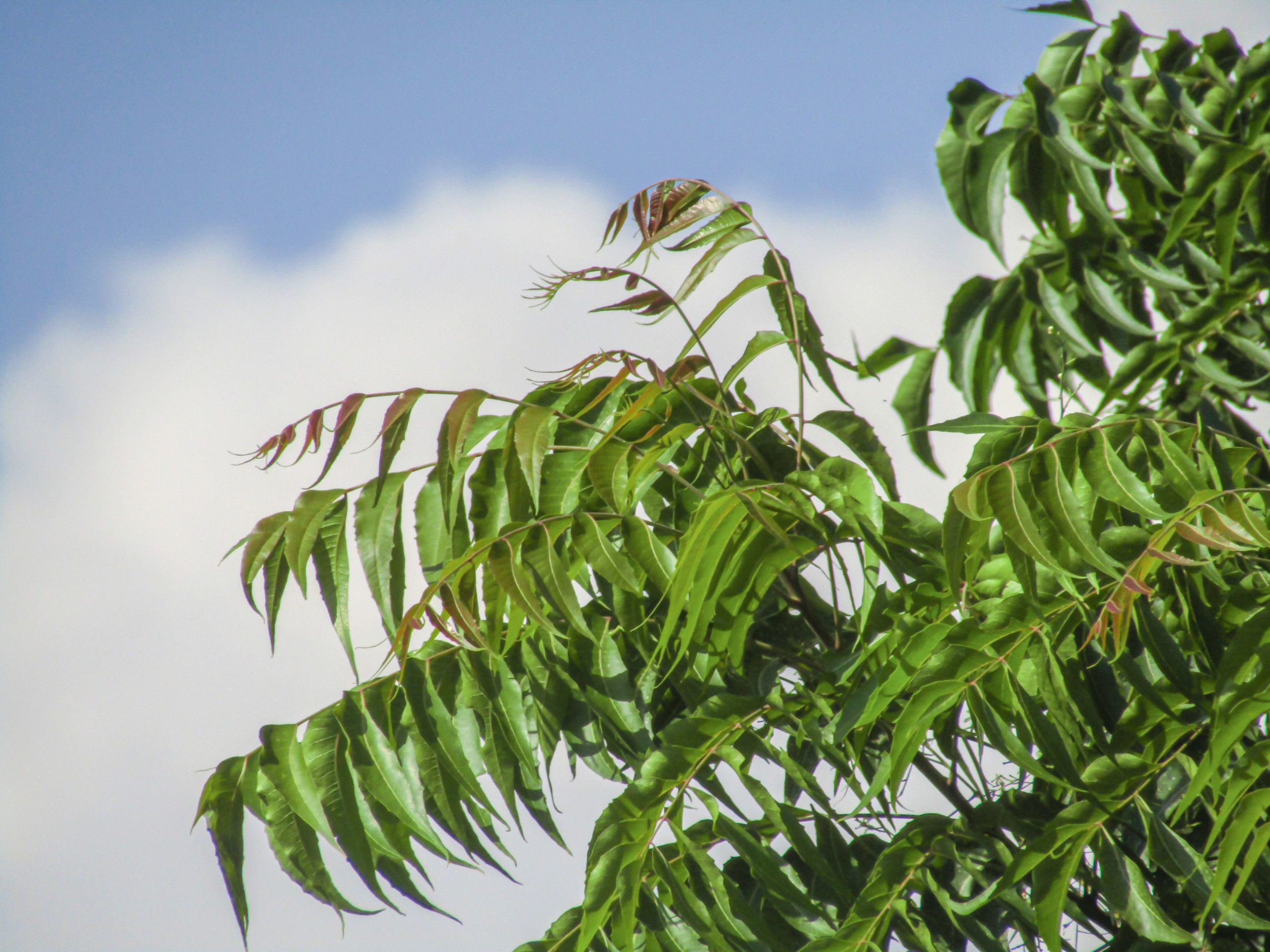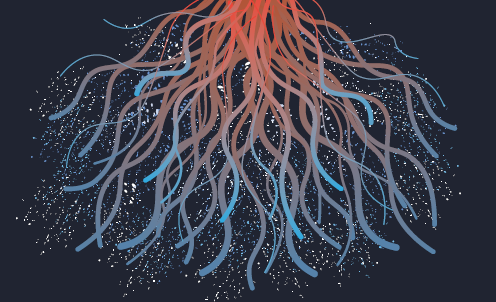Neem, or botanically: Azadirachta indica, is a tree that is part of the mahogany family, Meliacaea. It is one of the most effective and relied upon pesticides in organic farming around the world, and it is a medicine that has been administered for thousands of years. Despite this, the research into this herb is lacking, yet what limited evidence exists, is quite promising. With uses such as gingival health, adaptive, immune support, and a host of topical uses for its oil, neem is continuing to bud outward in the consciousness of researchers worldwide. However, many of its traditional uses still remain hidden to the world at large.

Beginning with the history of neem, the original scholars of traditional Indian medicines (Ayurveda, Siddha, and Unani medicines) are the first to recite the uses of neem as far back as 5,000 BCE but some research suggests it could go as far back as 10,000 BCE.[i] Additionally, in 5,000 year old Indus Valley civilization ruins, which are the same sites that the now-famous ancient brain surgery suites were first discovered, neem is located within these surgical rooms.[ii] Meanwhile, In Siddha medicine, the traditional medicine of Southern India historically, neem is the first described plant in their original manuscripts on plant medicine, which was written in 400 BCE. The tree also has many mythological associations which further denote its importance. For instance, Indra, a supreme deva, returned from fighting demons and spilled ambrosia on the plant, bestowing on it supernatural healing abilities and resistance to demons. In another myth, the Sun god Surya hid within a neem tree to avoid being harmed by demons.[iii] These repeated myths speak to the reverence and understanding the ancient Indians had for the neem tree, as well as can be interpreted in a mundane manner to suggest the “demons” being referenced are insects and the diseases they bring with them, which neem offers protection from.
Today, neem is still used as traditional medicine. In an ethnobotanical survey of neem’s medicinal uses in India and Indonesia, neem was found to be used for diabetes, headache, heartburn, appetite stimulation, skin diseases, dental care, gastrointestinal disorders, as an insect repellent, and to treat malaria most commonly.[iv] It is not uncommon to see individuals chewing on neem twigs for overall oral health. These uses mirror the historical uses, suggesting an unbroken chain of medicinal implementation of neem. In Ayurveda, it is considered a cooling herb that would thereby treat the hot conditions of diabetes, headache, heartburn, skin eruptions, gingivitis, and malaria.[v]
When defeating both insects and demons alike, it is neem oil that is used. Neem oil is cold-pressed from the seed and contains the tetranortriterpenoid Azadirachtin. This unique molecule decreases insect feeding as well as actively disrupts the reproductive cycle of feeding insects. It has been found useful in over 200 species of common pests.[vi] In humans, this same molecule may be directly cytotoxic to cancer cells. It has been found cytotoxic to glioblastoma cell lines,[vii] cervical cancer cell lines,[viii] and also appears to protect beta-cells from human islet amyloid polypeptide dysfunction.[ix] This is the first research of its kind to begin to elucidate the mechanism that neem uses to prevent and treat diabetes and validating a medical claim made by ancient Ayurvedic scholar-physicians 5,000 years prior.
The other well-studied phytochemical of neem is nimbin and its derivatives such as nimbolide. Nimbin is a triterpenoid that exerts anti-inflammatory, antihistamine, and anti-pyretic activity.[x] A cooling chemical if there ever was one. Additionally, neem is known to contain high amounts of vitamin C, epicatechins (the anti-inflammatory molecules found in green tea), and quercetin.[xi]
Sadly, if one enters into the research database Pubmed, they will find that if they search for only human trials of neem, 28 results will emerge. The main theme of these being insect repellent, topical use for skin health, and gingival health. To this end, the studies are largely positive, finding neem efficacious in all these categories. Yet still missing are human trials on many of the other medicinal qualities covered. Meanwhile, if one expands to include in-vitro and in-vivo research, a staggering 1,548 results emerge, all with thought-provoking findings. This suggests that while neem is being studied extensively for its myriad of uses, there seems to be a delay in the crossover to human trials. Given its immense history of use in India, Indonesia, and Africa, almost perfectly dovetailing the uses being explored in non-human research, it seems it is high time that explorations of this ancient marvel be better elucidated in human trials, such as the one trial of neem leaf increasing CD4 cell counts in HIV positive patients.[xii] This continued demonstration of efficacy should only light the way towards the increased utility of this unique and highly sustainable panacea.
- [i] Kumar, V. S., & Navaratnam, V. (2013). Neem (Azadirachta indica): prehistory to contemporary medicinal uses to humankind. Asian Pacific journal of tropical biomedicine, 3(7), 505–514.
- [ii] Slideshare . San Francisco: Slideshare; The neem tree was regarded as sacred in Mohenjo-daro civilization. [Online] Available from: http://www.slideshare.net/imulla/neem-presentation-882503. [Accessed 9 August, 2021]
- [iii] S. Manasi and K.V. Raju People and the Peepal: Cultural Attitudes to Sacred Trees and Their Conservation in Urban Areas. Partridge Publishing India Oct 27, 2015.
- [iv] Sujarwo, W., Keim, A. P., Caneva, G., Toniolo, C., & Nicoletti, M. (2016). Ethnobotanical uses of neem (Azadirachta indica A.Juss.; Meliaceae) leaves in Bali (Indonesia) and the Indian subcontinent in relation with historical background and phytochemical properties. Journal of ethnopharmacology, 189, 186–193.
- [v] Sodhi, V. (2014). Ayurvedic herbs: The comprehensive resource for ayurvedic healing solutions. Bothell, WA: Book Network.
- [vi] Aribi, N., Denis, B., Kilani-Morakchi, S., & Joly, D. (2020). L’azadirachtine, un pesticide naturel aux effets multiples [Azadirachtin, a natural pesticide with multiple effects]. Medecine sciences : M/S, 36(1), 44–49.
- [vii] Akudugu, J., Gäde, G., & Böhm, L. (2001). Cytotoxicity of azadirachtin A in human glioblastoma cell lines. Life sciences, 68(10), 1153–1160.
- [viii] Priyadarsini, R. V., Murugan, R. S., Sripriya, P., Karunagaran, D., & Nagini, S. (2010). The neem limonoids azadirachtin and nimbolide induce cell cycle arrest and mitochondria-mediated apoptosis in human cervical cancer (HeLa) cells. Free radical research, 44(6), 624–634.
- [ix] Dubey, R., Patil, K., Dantu, S. C., Sardesai, D. M., Bhatia, P., Malik, N., Acharya, J. D., Sarkar, S., Ghosh, S., Chakrabarti, R., Sharma, S., & Kumar, A. (2019). Azadirachtin inhibits amyloid formation, disaggregates pre-formed fibrils and protects pancreatic β-cells from human islet amyloid polypeptide/amylin-induced cytotoxicity. The Biochemical journal, 476(5), 889–907.
- [x] Kraus, “Biologically active ingredients-azadirachtin and other triterpenoids”, in: H. Schutterer (Ed.), The Neem Tree Azadirachta indica A. Juss and Other Meliaceous Plants, Weinheim, New York, 1995, p 35-88
- [xi] Atawodi SE, Atawodi JC (2009) Azadirachta indica (neem): a plant of multiple biological and pharmacological activities. Phytochem Rev 8:601–620
- [xii] Mbah, A. U., Udeinya, I. J., Shu, E. N., Chijioke, C. P., Nubila, T., Udeinya, F., Muobuike, A., Mmuobieri, A., & Obioma, M. S. (2007). Fractionated neem leaf extract is safe and increases CD4+ cell levels in HIV/AIDS patients. American journal of therapeutics, 14(4), 369–374.
Share:
Related Posts

Why Would I Test Positive To Foods On A Dietary Antigen Test That I Don’t Eat?
Written by Precision Point Diagnostics | 2025 True food allergies are when the body develops antibodies against a particular food, or a related food. Patients

Mitochondria: The Overlooked Link in the Gut-Brain Axis
Written by Dr Sarah Daglis | 2025 The gut-brain axis is well-established, but there’s more to this dynamic relationship than meets the eye. A vital

Unlocking Respiratory Resilience Through Functional Medicine
Article written by Dr Michelle Clark Naturopathic Doctor Clinical Education Manager, FxMed Published 1 September 2024 People take supplements to improve or optimize their health.

AHCC: Unlocking the Immune Intelligence of Shiitake Mycelia
Article written by Jessica Sanders BSc. (Psy), Dip Nat, Dip Med Herb Technical Projects, FxMed Published 1 September 2024 People take supplements to improve or

Life After Weight Loss Meds
Kathi Head, ND February 20, 2025 You would have to have been spending glorious hours lying on the beach on a desert island not to


